Related Research Articles
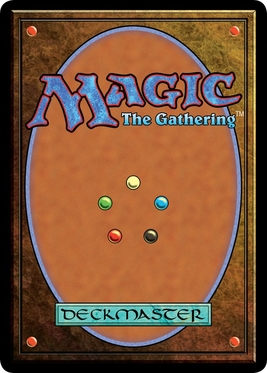
Magic: The Gathering is a tabletop and digital collectible card game created by Richard Garfield. Released in 1993 by Wizards of the Coast, Magic was the first trading card game and had approximately fifty million players as of February 2023, and over twenty billion Magic cards were produced in the period from 2008 to 2016, during which time it grew in popularity. As of 2022, Magic generates about $1 billion per year.

The Yu-Gi-Oh! Trading Card Game is a collectible card game developed and published by Konami. It's based on the fictional game of Duel Monsters created by manga artist Kazuki Takahashi, which appears in portions of the manga franchise Yu-Gi-Oh! and is the central plot device throughout its various anime adaptations and spinoff series.
The Odyssey is a Magic: The Gathering expert-level block. It consists of a trio of expansion sets: Odyssey, Torment and Judgment.

Yu-Gi-Oh! Forbidden Memories, known in Japan as Yu-Gi-Oh! Shin Duel Monsters (遊戯王真デュエルモンスターズ封印されし記憶), is a video game loosely based on the Yu-Gi-Oh! manga and anime series. The game was released exclusively for the PlayStation console in December 1999 in Japan and in 2002 in other regions.
Magic: The Gathering Limited Edition is the first Magic: The Gathering card set. It premiered in a limited release at Origins Game Fair in 1993, with a general release that August. The initial print run of 2.6 million cards sold out quickly, and a new printing run was released in October 1993. These two runs are known as Limited Edition Alpha and Limited Edition Beta, or just Alpha and Beta for short. Although Alpha and Beta are referred to as different sets by some, officially they are the same set; Wizards of the Coast had expected that people wouldn't necessarily be able to tell the two press runs apart. Beta fixed a number of misprints and errors on cards. The printer accidentally used different corner rounding dies for the second run, resulting in Alpha cards being noticeably distinct in shape and appearance from Beta cards and all subsequent cards. The Beta printing also included a revised rulebook with a number of clarifications, although creator Richard Garfield's short fiction "Worzel's Tale" was removed to make room. The print run of Beta is given as 7.3 million or 7.8 million depending on the source. Despite the set's print run being about three times as big as Alpha's, Beta sold out as quickly as its predecessor.

Yu-Gi-Oh! Dark Duel Stories, known in Japan as Yu-Gi-Oh! Duel Monsters III: Tri-Holygod Advent , is a 2000 digital collectible card game of the Yu-Gi-Oh! universe for the Game Boy Color developed and published by Konami. The game was Konami's first attempt at a Yu-Gi-Oh! game released in English and the third game in the Japanese Duel Monsters series. This game uses the rules of the previous Duel Monsters games, as opposed to the rules for the Yu-Gi-Oh! Trading Card Game. Players of the game can trade and battle with other players using a link cable.
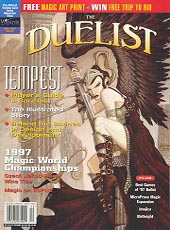
The Duelist was a trading card game magazine published by Wizards of the Coast.

The Harry Potter Trading Card Game is an out-of-print collectible card game based in the world of J. K. Rowling's Harry Potter novels. Created by Wizards of the Coast in August 2001, the game was designed to compete with the Yu-Gi-Oh!, Pokémon and Magic: The Gathering card games. Its release was timed to coincide with the theatrical premiere of the first film in the series. The game was praised for the way it immersed children in the Harry Potter universe. At one point the game was the second best selling toy in the United States; however, it is now out of print.

The World of Warcraft Trading Card Game is an out-of-print collectible card game based on Blizzard Entertainment's MMORPG, World of Warcraft. The game was announced by Upper Deck Entertainment on August 18, 2005 and released on October 25, 2006. Players can play against each other one-on-one, or can join others in order to defeat dungeon/raid "bosses" based on those in the MMORPG. In March 2010, Upper Deck lost the license from Blizzard Entertainment. The license was acquired by Cryptozoic Entertainment later in the month, with the company announcing that planned card sets would be released.

Yu-Gi-Oh! Worldwide Edition: Stairway to the Destined Duel, later released in Japan as Yu-Gi-Oh! Duel Monsters International, is a Game Boy Advance game based on the popular Yu-Gi-Oh! trading card game and TV series that has the player set during the Battle City arc, dueling popular characters from the anime and manga. The main objective of the game is to build a strong deck from cards won after duels from the main cast from the English second season anime.
Magic: The Gathering formats are various ways in which the Magic: The Gathering collectible card game can be played. Each format provides rules for deck construction and gameplay, with many confining the pool of permitted cards to those released in a specified group of Magic card sets. The Wizards Play Network, the governing body that oversees official Magic competitive play, categorizes its tournament formats into Constructed and Limited. Additionally, there are many casual formats with the Commander format being one of the most popular formats of the game.

Mark Poole is an American fantasy artist, best known for working on the first set of Magic: the Gathering cards.
The rules of Magic: The Gathering were originally developed by the game's creator, Richard Garfield, and accompanied the first version of the game in 1993. The rules of Magic have been changed frequently over the years by the manufacturer, Wizards of the Coast, mostly in minor ways. However, major rules overhauls have also been done a few times.
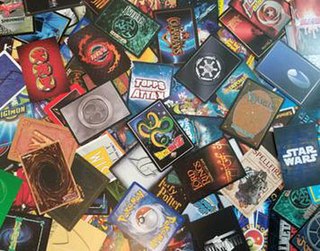
A collectible card game (CCG), also called a trading card game (TCG) among other names, is a type of card game that mixes strategic deck building elements with features of trading cards, introduced with Magic: The Gathering in 1993.
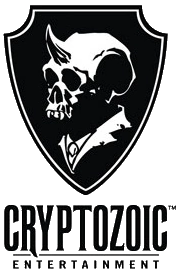
Cryptozoic Entertainment is an American publisher of board and card games, trading cards and collectibles based on both licensed and original intellectual properties. The company is well known for its "Cerberus Engine Game", the catch name for its series of deck-building games. Cryptozoic's first game was based on DC Comics characters, having been released in 2012. The Cerberus engine is utilized in various games; all Cerberus games are compatible with each other, allowing gamers to intermix different decks and characters from different universes.

The BattleTech Trading Card Game is an out-of-print collectible card game (CCG) set in the BattleTech universe. The game was developed by Wizards of the Coast (WotC) for FASA and released in 1996.
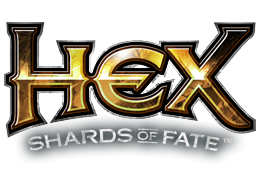
HEX: Shards of Fate was a massively multiplayer online trading card game (MMOTCG) by Cryptozoic Entertainment. It is the first game in the MMOTCG genre. It was funded via Kickstarter, and raised US$2,278,255 while its campaign was active. As of October 28, 2013, Hex was the 11th most-funded video game on Kickstarter. The game was officially released on January 26, 2016, and was playable on Windows, OS X and iOS.
Mike Elliott is a Seattle-based board game, card game and mobile game designer whose titles include Magic: The Gathering, Thunderstone, and Battle Spirits Trading Card Game. Magic head designer Mark Rosewater called him "one of the most prolific Magic designers in the history of the game." He was inducted into the Academy of Adventure Gaming Arts & Design Hall of Fame at the 2017 Origins Game Fair.

A digital collectible card game (DCCG) or online collectible card game (OCCG) is a computer or video game that emulates collectible card games (CCG) and is typically played online or occasionally as a standalone video game. Many DCCGs are types of digital tabletop games and follow traditional card game-style rules, while some DCCGs use alternatives for cards and gameboards, such as icons, dice and avatars. Originally, DCCGs started out as replications of a CCG's physical counterpart, but many DCCGs have foregone a physical version and exclusively release as a video game, such as with Hearthstone.
Teenage Mutant Ninja Turtles Trading Card Game is an out-of-print collectible card game by Upper Deck and was released in February 2004. It was based on the cartoon series of the same name. The base set called Turtles Unleashed had 55 Common cards and 100 Foil cards, with 10 Super Rare foils and 10 Ultra Rare foils. Two planned expansions were to be released but never materialized: Swift as the Wind in May 2004 and Still as the Forest in September 2004. Future cards were to include Mystic Ninjas and Shredder's Elite Guard.
References
- Baxter, George H. (1996). Tables of Magic. Wordware Publishing. ISBN 1556224869.
- Baxter, George H. (1997). Baxter on Magic: A Guide to Proper Playing Techniques for Magic: The Gathering. Jones & Bartlett Publishing. ISBN 1556225237.
- Chin, Elliott (2004). Yu-Gi-Oh! The Dawn of Destiny. Prima's Official Strategy Guide Series. Random House Information Group. ISBN 0761545352.
- Hogwood, James (2005). Yu-gi-oh! Nightmare Troubador. Prima Official Game Guide Series. Random House. ISBN 0761550941.
- Kaufeld, John; Smith, Jeremy (2006). Trading Card Games For Dummies. John Wiley & Sons. ISBN 0470044071.
- Moursund, Beth (1997). The Official Magic: The Gathering : Strategies & Secrets. Sybex. ISBN 0782120318.
- Sirlin, David (2006). Playing to Win: Becoming the Champion. Lulu Press. ISBN 1411666798.
- Smith, Larry W. (1995). Learn Magic Cards. Wordware Publishing. ISBN 1556224605.
- Tabak, Matt (23 May 2013). "Magic 2014 Core Set Rules Preview". Archived from the original on 7 June 2013. Retrieved 23 January 2014.
- Tam, Eric (September 1998). "Side by sideboard". The Duelist . No. 29. pp. 54–56.
- The Pocket Players' Guide . Magic: The Gathering Series. Wizards of the Coast staff (2 ed.). HarperCollins Canada. 1996. ISBN 0061056235.
{{cite book}}: CS1 maint: others (link) - "Magic:The Gathering Basic rulebook" (PDF). Wizards of the Coast . Retrieved 22 January 2014.
- "Magic:The Gathering Comprehensive rules". Wizards of the Coast. 1 November 2013. Retrieved 22 January 2014.
- "Magic:The Gathering tournament rules" (PDF). Wizards of the Coast. 27 September 2013. Archived from the original (PDF) on 24 January 2011. Retrieved 22 January 2014.
- "What is a sideboard?". Wizards of the Coast. Retrieved 22 January 2014.
- "Jester's Sombrero". Magic:The Gathering Gatherer. Wizards of the Coast. Retrieved 22 January 2014.
- "Look at Me, I'm the DCI". Magic:The Gathering Gatherer. Wizards of the Coast. Retrieved 22 January 2014.
- "World of Warcraft Trading Card Game: Drums of War official rulebook" (PDF). Retrieved 22 January 2014.
- "World of Warcraft TCG Comprehensive Rules version 7.2" (PDF). Cryptozoic Entertainment. 22 February 2013. Retrieved 24 January 2014.
- "Cryptozoic Entertainment Official Tournament Policy" (PDF). Cryptozoic Entertainment. 17 July 2012. Retrieved 24 January 2014.
- "Cryptozoic Entertainment Appendix: World of Warcraft Trading Card Game Policies" (PDF). Cryptozoic Entertainment. 22 February 2013. Retrieved 24 January 2014.
- "Appendix P: Tournament Penalty Guide" (PDF). Cryptozoic Tournament Appendix. Cryptozoic Entertainment. 23 July 2013. Retrieved 24 January 2014.
- "World of Warcraft Trading Card Game Official Card Reference" (PDF). Cryptozoic Entertainment. 5 March 2013. Retrieved 24 January 2014.
- "Yu-Gi-Oh! Trading Card Game Official Rulebook" (PDF) (8th ed.). Konami . Retrieved 22 January 2014.
- "Change in rulebook". Konami. 24 November 2009. Retrieved 22 January 2014.
- Pogo's Unofficial Yu-Gi-Oh GX Dual Academy: Trainers Guide 2007 . Scholastic. 2006. ISBN 1572439297.
- Shonen Jump's Yu-gi-oh! trading card game, master duelist's guide: Prima's official card catalog. Prima Temp staff. Prima Games. 2004. ISBN 076154514X.
{{cite book}}: CS1 maint: others (link) - Score Entertainment's Expanded Format Current Rulings Document, Score Entertainment, 24 November 2004
- Dragon Ball Z CCG and Dragon Ball GT TCG Expanded Format CRD